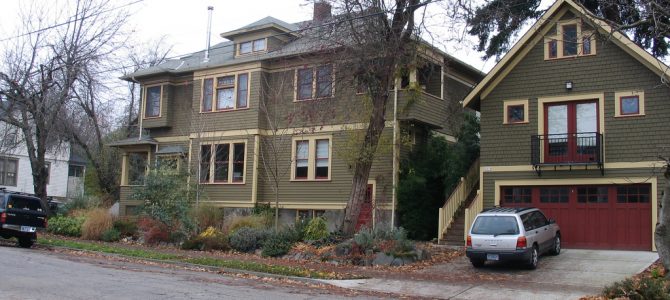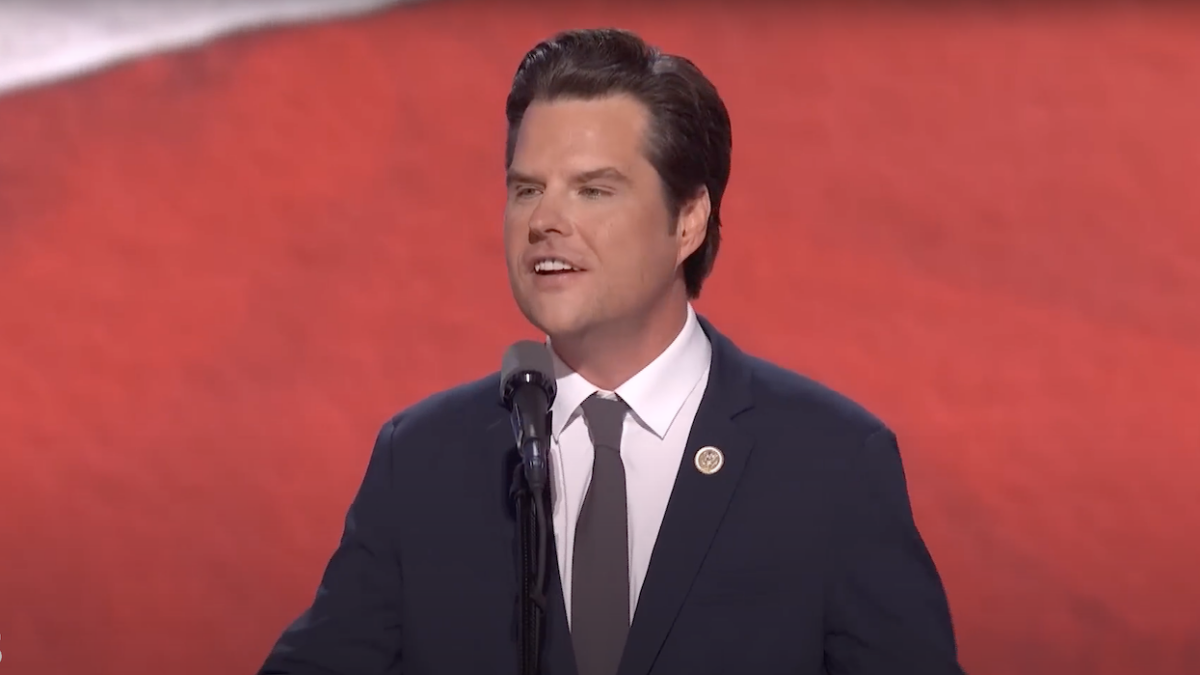
In Amish communities, there aren’t nursing homes. The Amish don’t pay into or receive Social Security, and believe they are responsible for the wellbeing of the aged in their communities. So families build a “dawdi haus”: a small accessory dwelling, attached to or next to the family’s principal home. When the father of a household retires and passes the farm along to his youngest son, he and his wife move into the dawdi haus. As one Indiana blogger puts it,
Help and assistance is close at hand, and loneliness—the bane of the widowed retiree—is unheard of. The newly retired grandparents can do as much or as little work as they choose to do, and as health allows. The grandfather can still help out on the farm, and the grandmother can help with the cooking, grandchildren, or whatever she wants. They are included in family and social gatherings and never feel like they’ve been left behind. They have their privacy, and their own home, but family is nearby in case of trouble, and they can be properly looked after. It’s a tradition that works well.
Arrangements like these used to be rather common in American households. These days, multi-generational housing arrangements get a bad rep—mainly because they involve 20-somethings camping out in their parents’ basement—but in previous decades, it was not uncommon for multiple generations to live under the same roof, or at least on the same property. So what changed?
The Rise of Single-Family Detached Housing
Put most simply, the American neighborhood changed. After World War II, American urbanism shifted toward suburban, nuclear family housing. In a newly released R Street Institute report, Senior Fellow Jonathan Coppage explains the history of these changes, and the impact they’ve had on housing and the American neighborhood:
In the postwar period, the relatively simple and compact single-family zoning pattern—originally designed to protect residential neighborhoods from noxious industrial activity—was expanded and complicated, with explicit federal housing policies that reinforced single-family housing on ever larger lots with rapidly diminishing tolerance of diversity. Zoning shifted from prohibiting industrial and commercial development in residential zones to prescribing the shape and structure that residential housing could take within those already protected neighborhoods.
The emphasis on single-family detached housing reinforced the idea of nuclear family living, and in practice, has given us “what may well be the lowest-density settlements in the history of the world,” according to Sonia Hurt’s “Zoned in the USA.” Our zoning laws have grown ever more restrictive, and many folks who want some sort of accessory dwelling on their property have to bend or break the law in order to do it (Coppage found that “fully one in five San Francisco residential buildings included an illegal secondary unit”).
Why Accessory Dwellings Are Actually a Good Idea
Coppage argues that we should embrace accessory dwelling units (the technical name for a “granny flat,” “mother-in-law suite,” “carriage house,” “secondary unit,” “backyard cottage”—or dawdi haus). He suggests we should be more permissive in granting Americans the rights to build additional housing on their properties—be it a basement apartment or a MEDCottage in the backyard.
Accessory dwelling units (ADUs) offer the opportunity for supplemental income, a separate but complementary space for the elderly, and a flexible, rentable space for those who may have college students or millennials looking for a place to crash. They also, importantly, pose some challenges for cities or neighborhoods hesitant to increase tourism, density, and traffic—which we will consider later on. But first, let’s look at some major positives to ADU-inclusive zoning.
The Modern American Family Is Changing
Back when many of our zoning laws were created, a boom of nuclear family units had filled the United States. In post-World War II America, the two-parent family—often with a husband working, and a “housewife” tending the home—became increasingly common. “The Dick Van Dyke Show,” “Leave It To Beaver,” and other television programs of the era depict a vision of suburban living that is highly specific and private.
But increasingly, that’s not what the American family looks like anymore. As Reihan Salam noted for Slate,
Married couples with children have fallen from 42.9 percent of all households in 1940 to 20.2 percent of all households in 2010, while married couples without children have fallen from 33.4 to 28.2 percent of all households. Single-parent families have also increased, of course, from 4.3 percent to 9.6 percent. The most dramatic change has been the steep increase in one-person households, from 7.8 to 26.7 percent of the total. Families have also been transformed by rising female labor force participation, with women now serving as the sole or primary wage earner in four in 10 U.S. households with children.
What do these changes do to housing? The suburban home, as Salam writes, requires constant upkeep, maintenance, and care. That works for families with the capital and hands necessary to truly care for a space. But it doesn’t work for a single adult trying to make mortgage payments alone. And it doesn’t work for the single mom who’s struggling to get the bills paid—let alone get the lawn mowed and the gutters cleaned out.
Meanwhile, the baby boomer generation is aging, even as the conception of nursing home care becomes a less attractive option for many, and the cost of assisted living care goes up. Many families want to be close to their elderly family members, even as they lose independence and require greater care. In circumstances such as these, the idea of a dawdi haus becomes more appealing. The “nuclear family” is a relatively modern construct. In other parts of the world, extended or multi-generational family living is still the norm.
Millennials Are Moving Homeward
Meanwhile, many young people (millennials, most notoriously) are seeking a transitional living space, whether they’re just out of school or struggling with unemployment. Last May, the Pew Research Center reported that a record number of Americans between the ages of 18 and 34 were living with their parents.
“The Bureau of Labor Statistics reports that 5.7 percent of men ages 25 to 34 are unemployed, a full percentage point lower than older men,” notes the Washington Post. “Fry’s analysis of census data shows that 36 percent of older millennials without jobs live with their parents, compared with 18 percent of employed men.”
But while we shake our heads at these unemployed young people eating Cheetos on their parents’ couch, we may ignore the benefits to this living arrangement. Pew notes that this is the most young people living at home since 1880—but that means that, once upon a time, such a living arrangement wasn’t entirely bizarre. Living in a country where the college graduate immediately pulls him or herself up by the bootstraps and begins paying $1,500 a month in rent isn’t an entirely realistic vision. Not for our current economy, and not for the young people figuring out an increasingly volatile future.
I wrote about this last year, arguing that millennials only get chastised for living at home when the “home” is no longer seen as a vibrant and integral piece of the local community.
Nowadays, most people leave the home in order to engage in their everyday lives: work, school, extracurriculars, and other activities all take place outside the sphere of the home. In contrast, the home used to be an economy unto itself—as well as a social and cultural hub. It was a place of industry and activity, in which its inhabitants all contributed to the day’s work. Since the industrial revolution, people have increasingly commuted away from home to work. This has encouraged the sense that ‘real life’ is happening outside the four walls of the home, not within them. And it is this sense that leads us to look at a 20-something living at home, and shake our heads. ‘Why,’ we ask, ‘aren’t they being responsible, contributing members of society?’ This is only a question we can ask when the home is no longer a functioning piece of society—when young people are expected to be atomistic, fledgling, career-oriented actors whose energies are focused away from the home, not within them.
Perhaps there’s still room for young people to learn and achieve valuable things within their home sphere: as more elderly people move into their children’s homes, as more Americans begin to telecommute, and as more families choose to homeschool, the home may continue to become a revitalized and important sphere of life. If so, young people at home could play a vital role in that sphere: helping with everything from domestic work to child or elder care, gardening and landscaping to repair work and maintenance.
Of course, there will be a temptation for that millennial house-crasher to binge on Netflix and only chip in an occasional $20 for groceries. But ideally, such a situation could breathe new life into the home sphere, transferring our attention away from commuter living, and toward the sort of neighborhood-nourishing practices that we’ve increasingly ignored of late.
The Cost Of Housing Is Going Up
Some areas (like Washington, D.C.) are exorbitantly expensive for young people and interns—and many turn to friends’ basements or spare bedrooms for affordable space. In an ideal situation, a mother-in-law suite or other attached or detached living space could offer many benefits for the young, enabling them to procure jobs they may not otherwise be able to take.
Meanwhile, such housing arrangements help homeowners make their mortgage payments, and maybe even save a little extra on the side. In today’s economy, that’s an appealing option to many—and has prompted several homeowners to join companies like Airbnb.
What Are The Primary Problems With ADUs?
But that leads us to some of the hesitations surrounding ADUs and their use. Coppage noted in a conversation that many cities worry ADUs will be used for tourist purposes, and not as long-term housing. That does away with the sort of longevity and community positives that a more permanent and stable housing arrangement could afford.
In Palo Alto, the city council decided to allow ADUs, as part of an effort to increasing housing opportunities amid rising costs and an aging population. But residents worried that “housing density will add to parking problems and change the character of single-family neighborhoods. Others question whether the new units will be used as short-term rentals rather than much-needed housing for those who want to live in Palo Alto.” So in response, the city mandated that units cannot “be rented for periods less than 30 days.”
Are there other reasons these zoning laws have become so restrictive? As one report notes, neighborhoods are often concerned about ADU’s effect on “property values, density, changes in neighborhood appearance, and increased parking and traffic congestion.”
While many of these cases must be handled on a case-by-case basis, it’s also true that some neighborhoods may already be too dense for an option like this to work. Older suburbs were built with less parking and yard space, and thus have fewer options for extra housing.
But in other neighborhoods—such as Arlington, Virginia—the idea isn’t just palatable. It’s already widely used: to supplement one’s income, to provide space for family members, friends, or interns, and to fight the challenges of a housing affordability crisis.
What Accessory Dwelling Units Can Achieve
Meanwhile, in Portland, Multnomah County officials are asking homeowners to let them build ADUs in their backyard—for the homeless:
The county would build the Accessory Dwelling Unit and a homeless person or family would live in it for five years. After five years, the homeowner would become the full owner with unrestricted use of the ADU. The building of the ADU would be at no cost to the homeowner. They would also not have to pay for utilities.
“Shelter beds are amazingly critical,” Multnomah Idea Lab Director Mary Li told a local news station. “They save lives, but none of us wants to think of anyone, particularly a family of children living in a shelter for any period of time.”
Our zoning laws may have made sense back in 1950. But as the American family changes, and housing affordability shifts, perhaps the ADU will become increasingly common. Whether it’s an aging relative, struggling millennial, visiting friend, or homeless family, many Americans want to provide shelter to the placeless in their lives. They just need a means to do it.









